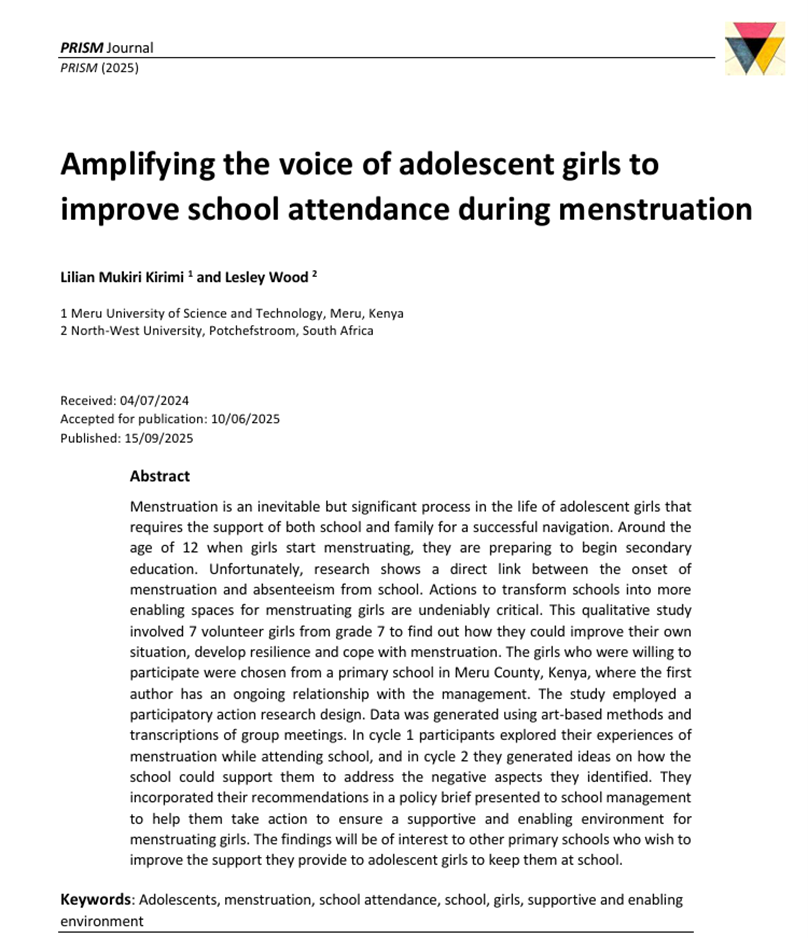Amplifying the voice of adolescent girls to improve school attendance during menstruation
DOI:
https://doi.org/10.24377/prism.article2583Keywords:
Adolescents, menstruation, school attendance, school girls, supportive and enabling environmentAbstract
Menstruation is an inevitable but significant process in the life of adolescent girls that requires the support of both school and family for a successful navigation. Around the age of 12 when girls start menstruating, they are preparing to begin secondary education. Unfortunately, research shows a direct link between the onset of menstruation and absenteeism from school. Actions to transform schools into more enabling spaces for menstruating girls are undeniably critical. This qualitative study involved 7 volunteer girls from grade 7 to find out how they could improve their own situation, develop resilience and cope with menstruation. The girls who were willing to participate were chosen from a primary school in Meru County, Kenya, where the first author has an ongoing relationship with the management. The study employed a participatory action research design. Data was generated using art-based methods and transcriptions of group meetings. In cycle 1 participants explored their experiences of menstruation while attending school, and in cycle 2 they generated ideas on how the school could support them to address the negative aspects they identified. They incorporated their recommendations in a policy brief presented to school management to help them take action to ensure a supportive and enabling environment for menstruating girls. The findings will be of interest to other primary schools who wish to improve the support they provide to adolescent girls to keep them at school.
Downloads

Downloads
Published
Issue
Section
License
Copyright (c) 2025 Lilian Mukiri Kirimi, Lesley Wood

This work is licensed under a Creative Commons Attribution-NonCommercial-NoDerivatives 4.0 International License.
Authors retain copyright and grant the journal the right of first publication with the work.
The version of the article published as part of this issue is licensed under a Creative Commons Attribution-NonCommercial-NoDerivatives 4.0 International Licence and allows others to read, download, copy, distribute, print, search, link to the full text of the first version of this article, or to use it for any other lawful purpose in accordance with the license. The author maintains copyright for the article published in this journal.
This journal provides immediate open access to its content and has no submission or publication fees.


